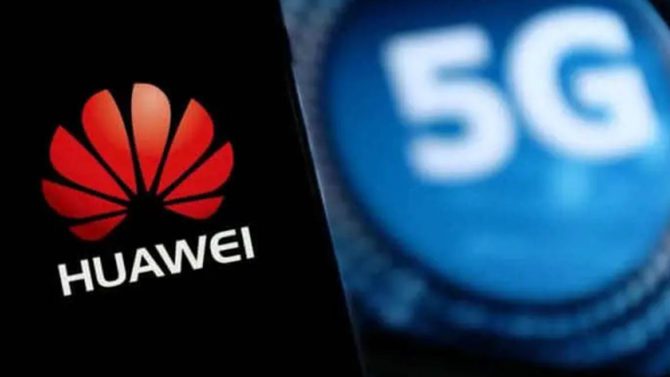Unveiling Huawei’s Hidden Chip Manufacturing Strategy

Huawei’s Secret Network for Chips: Navigating U.S. Sanctions
How Huawei’s Mysterious Semiconductor Facilities Could Change the Game?
In the realm of technological advancements, Huawei Technologies Co. has recently made waves with its covert undertaking – a series of secret semiconductor fabrication facilities scattered across China. This audacious move is seen as a strategic maneuver to maneuver around the far-reaching grasp of U.S. sanctions. The alarm bells have been sounded by a Washington-based semiconductor association, Bloomberg News reported on a fateful August 22. Let’s delve into the intricacies of this development and understand what’s at stake.
The Veiled Buildout: Unraveling the Mystery
The Chinese tech giant, known for its prowess in various technological domains, has plunged into chip production over the past year. The game-changer, however, is not just this stride into semiconductor manufacturing but the covert manner in which it’s being executed. The Semiconductor Industry Association warns that Huawei is quietly establishing multiple fabrication plants across China, with intentions that seem to defy the U.S. sanctions playbook.
Cat and Mouse: U.S. Sanctions and Huawei’s Strategy
The tale of Huawei’s ambitious move can’t be told without mentioning the backdrop of its adversarial relationship with the United States. Back in 2019, the U.S. Commerce Department imposed a critical blow by adding Huawei to its export control list, citing significant security concerns. The company’s alleged affiliations with the Chinese government and military raised eyebrows, leading to this dramatic step.
A Financial Push: Huawei’s Power Play
Reports suggest that the Chinese government has injected a staggering $30 billion into Huawei’s semiconductor aspirations. This substantial war chest has emboldened the tech giant to not only venture into chip production but also go undercover while doing so. The state funding, in conjunction with the company’s existing might, is enabling Huawei to shake off the shackles of dependency on external chip suppliers.
The Cryptic Web: Acquisitions and Construction
The Semiconductor Industry Association’s claims are both intriguing and concerning. Not only has Huawei acquired two existing fabrication plants, but it’s also actively constructing three more. The specifics of these facilities remain shrouded in secrecy, creating a sense of intrigue within the industry and sparking concerns about potential circumvention of U.S. government restrictions.
A Strategic Riddle: Circumventing U.S. Restrictions
If the allegations from the Semiconductor Industry Association hold true, Huawei’s hidden agenda might grant it an edge in bypassing the stringent regulations imposed by the U.S. government. Constructing facilities under the banner of unrelated entities could provide a pathway to indirectly acquire American chip-making equipment. This apparent workaround could rewrite the rules of the game, leaving regulators with a new puzzle to solve.
Denials and Silence: Huawei’s Response
As the news reverberated across the industry, both Huawei and the Semiconductor Industry Association remained tight-lipped. In the face of inquiries, they chose to maintain a conspicuous silence. The implications of their response, or the lack thereof, are yet to unfold, but the industry is watching with bated breath.
The Tightening Vise: Huawei’s Blacklisting
Huawei’s name has long graced the infamous trade blacklist in the United States. This blacklist has effectively choked the flow of goods and technology to the company from most suppliers, unless they’re armed with special licenses. The tightening of controls has been relentless, with the ultimate aim of severing the tech giant’s ability to procure or design the semiconductor chips that power its extensive array of products.
FAQs
1. Is Huawei the only company facing U.S. sanctions?
While Huawei is one of the most high-profile cases, several other entities and nations have also encountered U.S. sanctions due to various reasons, including geopolitical concerns and human rights issues.
2. How will Huawei’s secretive facilities impact the semiconductor industry?
If successful, Huawei’s strategy could set a precedent for other companies to explore similar covert approaches to circumvent restrictions, potentially disrupting the semiconductor supply chain.
3. What are the potential risks of Huawei’s actions?
The risks include exacerbating geopolitical tensions, undermining fair competition, and complicating international efforts to maintain a balance between technological innovation and security concerns.
4. Could Huawei’s approach lead to new regulations?
Yes, the revelation of Huawei’s secretive network might prompt governments and regulatory bodies to reevaluate and strengthen regulations surrounding technology trade, national security, and industrial espionage.
5. How might this impact Huawei’s global image?
The revelation of a covert network could tarnish Huawei’s image, leading to questions about transparency, ethical business practices, and compliance with international regulations.
Stay Updated about the latest technological developments and reviews by following TechTalk, and connect with us on Twitter, Facebook, Google News, and Instagram. For our newest video content, subscribe to our YouTube channel.





